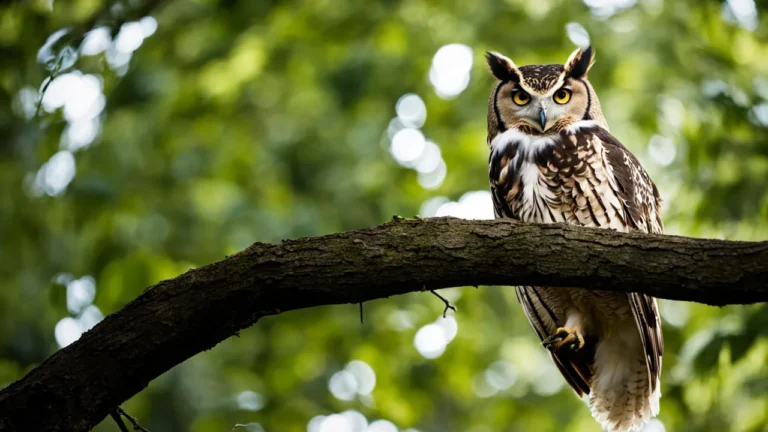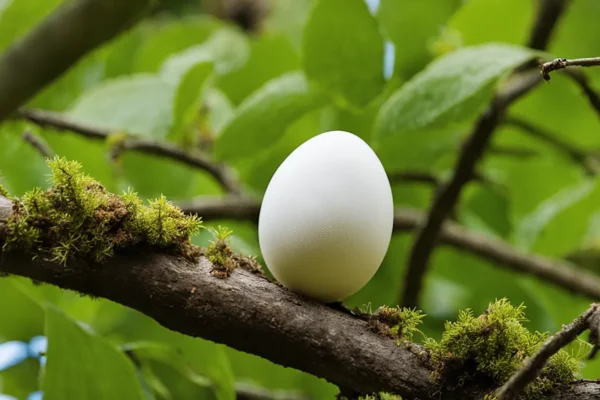For thousands of years, people have been enthralled by owls, these enigmatic animals of the night. Owls seem almost unearthly with their big, forward-facing eyes, keen claws, and quiet flight. But are these stealthy birds of prey really raptors?
For those with limited time, the following is a brief response to your inquiry: Owls are unquestionably birds. All the key traits that distinguish bird species are shared by them.
This thorough post will examine the anatomy, behavior, and genetics of owls in order to clarify why ornithologists generally concur that owls are members of the Aves class, which also includes eagles, sparrows, and chickens.
We’ll contrast owl characteristics with the scientific definition of a bird and discuss why, despite certain outward similarities, owls and mammals aren’t closely related.
Owls and Birds Have Similar Anatomical Features
Owls are birds, despite their unusual look and behavior. They are members of the Strigiformes order, which has over 200 distinct species of owls. Owls’ membership in the avian family is further supported by the fact that they have a number of bird-specific anatomical traits.
Wings with feathers and hollow bones
Their hollow bones are one of the main anatomical characteristics that owls have in common with other birds. These thin bones minimize the bird’s total weight while providing the strength and stiffness required for flying.
Their bones’ hollow areas also contribute to effective air circulation, which increases the amount of oxygen they can absorb when flying.
In addition, like other bird species, owls have feathered wings. Not only do these unique feathers allow for flight, but they also play a part in owls’ characteristic quiet flying. Their feather structure makes them very quiet and turbulence-free, which makes them great nighttime predators.
Minimal Weight Skeletons Enhanced for Air Travel
Owls have skeletons that are lightweight and tailored to their particular way of flying. To provide strength and stability during flying movements, their bones are fused together and strengthened in strategic locations. Owls have a major edge over other birds of prey while hunting because of this adaption, which enables them to fly quietly and navigate through thick woodlands.
Additionally, their skeletal structure facilitates the growth of powerful flying muscles, especially those in charge of regulating their wings. Because of this, owls are very adept predators and can fly with remarkable agility and accuracy.
Teeth-Free Beaks
Owls lack teeth and have beaks instead, much as other bird species. Their beaks are designed specifically to catch and eat their prey. The size and form of an owl’s beak varies according to the type and food source that it prefers.
While some owls have sharper beaks for collecting tiny insects, others have hooked beaks for shredding flesh.
Owls do not have teeth, thus they must break up their food with their beaks before eating it whole. Their digestive tract is designed to effectively break down and collect nutrients from their meal.
Owls Display Common Avian Behaviors
The owl is an interesting member of the bird family. They display a wide range of common avian behaviors, which confirms that they are really birds. Let’s take a closer look at a few of these actions.
Constructing Nests and Deploying Eggs
Owls construct nests, much like other birds, to lay their eggs and rear their young. They build their nests from of twigs, leaves, and other materials after carefully choosing a good spot, which is often in trees or on cliffs.
Usually, the female owl lays a clutch of eggs, which are then alternately incubated by both parents until the eggs hatch. The act of building nests is a distinctive feature shared by several bird species.
Sightseeing from Above
It is well known that owls are superb hunters since they can fly through the night in complete silence in order to capture their prey. They may surprise their prey because they have unique feathers that allow them to fly silently. Owls mostly consume insects, birds, and small animals for food.
Their beaks and keen talons allow them to quickly seize and kill their prey. Many different bird species, including owls, share this hunting habit.
Speaking Out Loud
Owls are renowned for their many vocalizations, each of which has a specific function. Hoots, screeches, trills, and even bird mimicking are examples of these vocalizations. These cries are used by owls to mark danger, establish territories, and communicate with their mates.
Their distinct vocalizations amply demonstrate their avian origins. The Owl Pages website has comprehensive information about owl vocalizations, so check it out if you’re interested in learning more.
Owls’ status as birds is supported by genetic data.
Genetic evidence is a major factor in the classification of animals, helping to determine their links and grouping. When it comes to owls, thorough DNA study has produced strong evidence that confirms their status as birds.
DNA Analysis Groups Owls with Other Avian Species
Scientists have shown that owls and other bird species have a great deal of genetic similarities via DNA research. The genes in charge of feather formation, flight adaptations, and general bird traits show the greatest degree of genetic similarity.
These results clearly imply that owls are birds.
Moreover, DNA study has shown that owls have the distinctive genetic markers and nucleotide sequences that are unique to birds. This adds credence to the idea that owls are an essential member of the large bird family.
Owls are within the Order Strigiformes.
From a taxonomic standpoint, owls belong to the Strigiformes order, which is mostly made up of birds. There are over 220 species of owls in this order, and they are found all over the globe.
Owls’ position as birds is furthered by their placement in the Strigiformes order.
Interestingly, owls and other bird species share a number of important anatomical traits. Their talons are for gripping, their bodies are light, and their beaks are designed to catch prey. Their avian origin is further highlighted by these similar qualities.
The History of Evolution Begins with the Dinosaurs
Significant evidence for owls’ categorization as birds may also be found in their evolutionary history. By means of fossil records and molecular investigations, researchers have established owls’ evolutionary ancestry to the era of dinosaurs.
The idea that owls descended from prehistoric bird forebears is supported by the discovery of fossils from the Cretaceous era that resemble owls.
Scientists have discovered unique characteristics that connect these ancient relics to contemporary owls by examining their anatomical architecture and genetic composition. These results support the theory that owls belong to the bird family.
Why Owls Appear to Be So Unlike Other Birds
Owls are amazing animals that often hold our interest due to their distinctive features. Even though they are birds, they differ from other common avian species in a few specific ways.
It’s important to examine owls’ nocturnal lifestyle, cunning hunting adaptations, and rich symbolism in order to comprehend why they seem to be so unique.
Nighttime Way of Life
Because they are mostly nocturnal, owls are most active at night. They differ from diurnal birds, which are active throughout the day, in this regard. Owls are able to benefit from the amount of prey that is accessible in the dark because to this adaption.
They can navigate and hunt with extraordinary effectiveness in low light because to their excellent night vision, keen hearing, and quiet flying. In contrast to other birds, who depend on their colorful plumage for communication and courtship, owls have developed the ability to blend in with their environment via camouflage.
Because of their nocturnal existence, owls exude mystery and mystique.
Hunting Adaptations for Stealth
Owls are different due to a variety of special hunting characteristics they have. Their peculiar feathers are one of their most striking characteristics. Owls can approach their prey in silence because of the fringed feathers on their legs and wings, which serve to muffle noise during flying.
Furthermore, the concentric feathers that make up their face disks function like a satellite dish, sending sound straight into their ears. They can find prey even in total darkness because to their extraordinary sense of hearing.
Owls’ curved beaks and sharp talons make them ideal for snatching and devouring their prey. Because of these adaptations, owls are known to be quiet and lethal predators and are very effective hunters.
Symbolism and Mythology
For a very long time, owls have been deeply symbolic in many civilizations’ mythologies. They are often linked to intuition, understanding, and wisdom. In Greek mythology, the goddess Athena was often shown holding an owl, which stood for insight and prediction.
Owls are considered to have mystical importance and to be messengers between the supernatural and human realms in Native American culture. Owls have a distinctive reputation that has been further enhanced by these cultural ties that have led to the impression of them as smart and enigmatic animals.
Final Thoughts
Even while owls have certain distinctive features, such as their forward-facing eyes, feathered legs, and very quiet flying, all birds have the same basic qualities. Owls’ place in the avian family tree has been confirmed by genetic tests. They developed with other birds from theropod dinosaurs.
You may now safely refer to any raptor you see soaring through the night sky as a bird the next time you see one of these enigmatic creatures.
Owls, with their own mythology, nocturnal habits, and skill in stealthy hunting, carve out an interesting place for themselves in the world of birds. However, underneath those captivating yellow eyes are the skeleton, natural tendencies, and evolutionary heritage of a genuine bird.


![35 Birds that Start with P [Images + IDs]](https://birdsology.com/wp-content/uploads/2023/05/7652995730_d8dcc9e630_b-600x400.jpg)


![38 Birds that Lay Speckled Eggs [Detailed Guide]](https://birdsology.com/wp-content/uploads/2023/11/8341a329b95e3bac01e26570049ce1eb-600x400.jpg)
2 thoughts on “Are Owls Birds?”